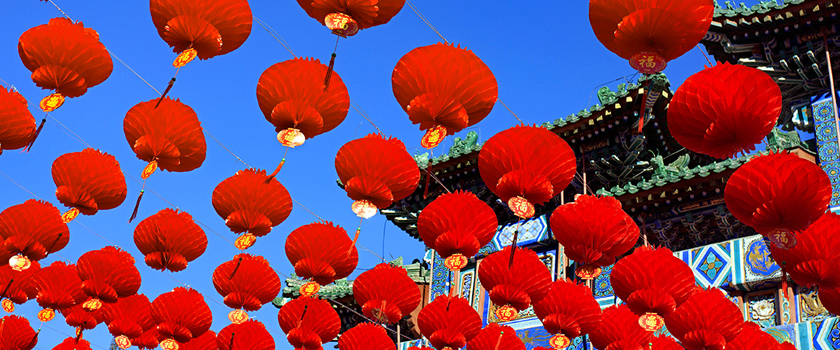The Chinese New Year is the most important of the traditional Chinese holidays. In China, it is known as ‘Spring Festival’, the literal translation of the Chinese name 春节 (Pinyin: Chūnjié). Spring Festival begins on the first day of the first month in the traditional Chinese calendar and ends with Lantern Festival which is on the 15th day.
1. Origin
According to tales and legends, the beginning of Chinese New Year started with the fight against a mythical beast called the Nian (Chinese: 年; pinyin: Nián). Nian would come on the first day of New Year to eat livestock, crops, and even villagers, especially children.
To protect themselves, the villagers would put food in front of their doors at the beginning of every year. It was believed that after the Nian ate the food they prepared, it wouldn’t attack any more people. One time, people saw that the Nian was scared away by a little child wearing red. The villagers then understood that the Nian was afraid of the color red.
Hence, every time when the New Year was about to come, the villagers would hang red lanterns and red spring scrolls on windows and doors. People also used firecrackers to frighten away the Nian. From then on, Nian never came to the village again. The Nian was eventually captured by Hongjun Laozu, an ancient Taoist monk. The Nian became Hongjun Laozu’s mount.
For celebrating this, Chinese called the last day of one year “Nian” and Chinese New Year also known as “Guo Nian”, which means all bad things passed away and meet the New Year.
Read Also: Trademark Translation in Chinese and western cultures
2. Meaning
The Spring Festival is the most important and longest holiday in China. In this day, every family is celebrating together and enjoys the New Year’s Eve dinner. Before the eve of the New Year, everyone tries to come back home from every corner of the country to join the entire family, just like Americans’ practice for Christmas, to greet the New Year.
A New Year big dinner is served. After the meal, the table is cleared, dishes washed and put away. Then it is time to undertake final preparations to meet the New Year. This is a festival for reunion.
People express their good wishes for the New Year and kids play fireworks. Most of adults will wait for the coming of New Year till 00:00. At this moment, people cheer and light fireworks.
3. Food
Different places in China enjoy different foods for New Year. The south people commonly have rice while the north dumplings or noodles. But all of them share a good will for the next year.
A reunion dinner is held on New Year’s Eve where members of the family gather for the celebration. The venue will usually be in or near the home of the most senior member of the family. The New Year’s Eve dinner is very large and sumptuous and traditionally includes dishes of meat (namely, pork and chicken) and fish.
Most reunion dinners also feature a communal hot pot as it is believed to signify the coming together of the family members for the meal. Most reunion dinners (particularly in the Southern regions) also prominently feature specialty meats (e.g. wax-cured meats like duck and Chinese sausage) and seafood (e.g. lobster and abalone) that are usually reserved for this and other special occasions during the remainder of the year.
In most areas, fish (simplified Chinese: 鱼; traditional Chinese: 魚; pinyin: yú) is included, but not eaten completely (and the remainder is stored overnight), as the Chinese phrase “may there be surpluses every year” (simplified Chinese: 年年有余; traditional Chinese: 年年有餘; pinyin: niánnián yǒu yú) sounds the same as “let there be fish every year.”
In mainland China, many families will banter whilst watching the CCTV New Year’s Gala in the hours before midnight.
There are many other customs in Spring Festival: the red packets (adults and parents give to children). It always contains money inside, used to suppress or put down the evil spirit.
Besides, gift exchange is also given to younger from elder. When visiting friends or relatives, people will also bring some gifts like candies, fruit, cakes etc. This is a good way to enhance relationship between people.
Take a look at how we helped our client by localizing their project for Chinese language. Click here to read the complete case study



